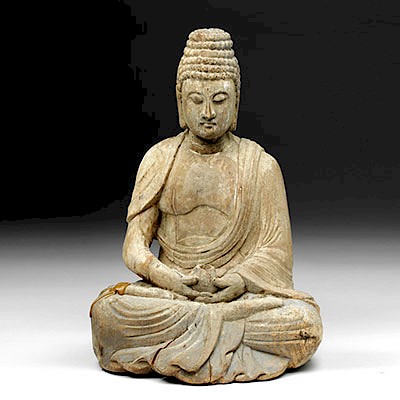Early 20th C. Papua New Guinea Cassowary Bone Dagger
Lot 169
About Seller
Artemis Gallery
686 S Taylor Ave, Ste 106
Louisville, CO 80027
United States
Selling antiquities, ancient and ethnographic art online since 1993, Artemis Gallery specializes in Classical Antiquities (Egyptian, Greek, Roman, Near Eastern), Asian, Pre-Columbian, African / Tribal / Oceanographic art. Our extensive inventory includes pottery, stone, metal, wood, glass and textil...Read more
Categories
Estimate:
$900 - $1,400
Absentee vs Live bid
Two ways to bid:
- Leave a max absentee bid and the platform will bid on your behalf up to your maximum bid during the live auction.
- Bid live during the auction and your bids will be submitted real-time to the auctioneer.
Bid Increments
| Price | Bid Increment |
|---|---|
| $0 | $25 |
| $300 | $50 |
| $1,000 | $100 |
| $2,000 | $250 |
| $5,000 | $500 |
| $10,000 | $1,000 |
| $20,000 | $2,500 |
| $50,000 | $5,000 |
| $100,000 | $10,000 |
| $200,000 | $20,000 |
About Auction
By Artemis Gallery
Jun 7, 2018
Set Reminder
2018-06-07 09:00:00
2018-06-07 09:00:00
America/New_York
Bidsquare
Bidsquare : Clearance Sale - Ancient / Ethnographic Art
https://www.bidsquare.com/auctions/artemis-gallery/clearance-sale---ancient-ethnographic-art-3264
Looking for a bargain on authentic ancient and ethnographic art? These lots are going, going, gone! Artemis Gallery info@artemisgallery.com
Looking for a bargain on authentic ancient and ethnographic art? These lots are going, going, gone! Artemis Gallery info@artemisgallery.com
- Lot Description
Oceania, Papua New Guinea, possibly Maprik / Wosera area, Abelam and Arapesh peoples, ca. early 20th century CE. Carved from the thigh bone of a huge cassowary bird (moruk in tok pisin). This example is extensively incised with abstract motifs - ancestral or clan designs - and presents a striking red, black, and white color scheme. These were traditionally worn on the upper arm, secured via a woven band, and occasionally around the neck. As a tool, bone daggers would have been used for hunting, combat, ceremonial sacrifices, digging, and/or dancing (singsing) decorations. This example still has its tip; those that have lost their tips are oftentimes used as lime spatulas or sewing tools. A special example with wonderful patina particularly evident in unpainted areas. Bilaterally perforated through upper joint end for suspension or attachment. Size: 13.25" H (33.7 cm); 13.5" H (34.3 cm) on included custom stand.
Provenance: ex-private Tucson, Arizona, USA collection; ex-Ron Perry collection; Ron Perry collected art and artifacts for more than 40 years in New Guinea and the South Pacific. He collaborated with Carolyn Leigh to write a book entitled, "Art Dealer in the Last Unknown: Ron Perry & New Guinea Art: the early years 1964-1972" (2011).
All items legal to buy/sell under U.S. Statute covering cultural patrimony Code 2600, CHAPTER 14, and are guaranteed to be as described or your money back.
A Certificate of Authenticity will accompany all winning bids.
We ship worldwide and handle all shipping in-house for your convenience.
#129973Normal surface wear and darkening in areas commensurate with age and ossification. Old nicks to joint end. Nice smooth, lustrous patina most evident on unpigmented areas.Condition
- Shipping Info
-
All shipping is handled in-house for your convenience. Your invoice from Artemis Gallery will include shipping calculation instructions. If in doubt, please inquire BEFORE bidding for estimated shipping costs for individual items.
-
- Buyer's Premium



 EUR
EUR CAD
CAD AUD
AUD GBP
GBP MXN
MXN HKD
HKD CNY
CNY MYR
MYR SEK
SEK SGD
SGD CHF
CHF THB
THB















